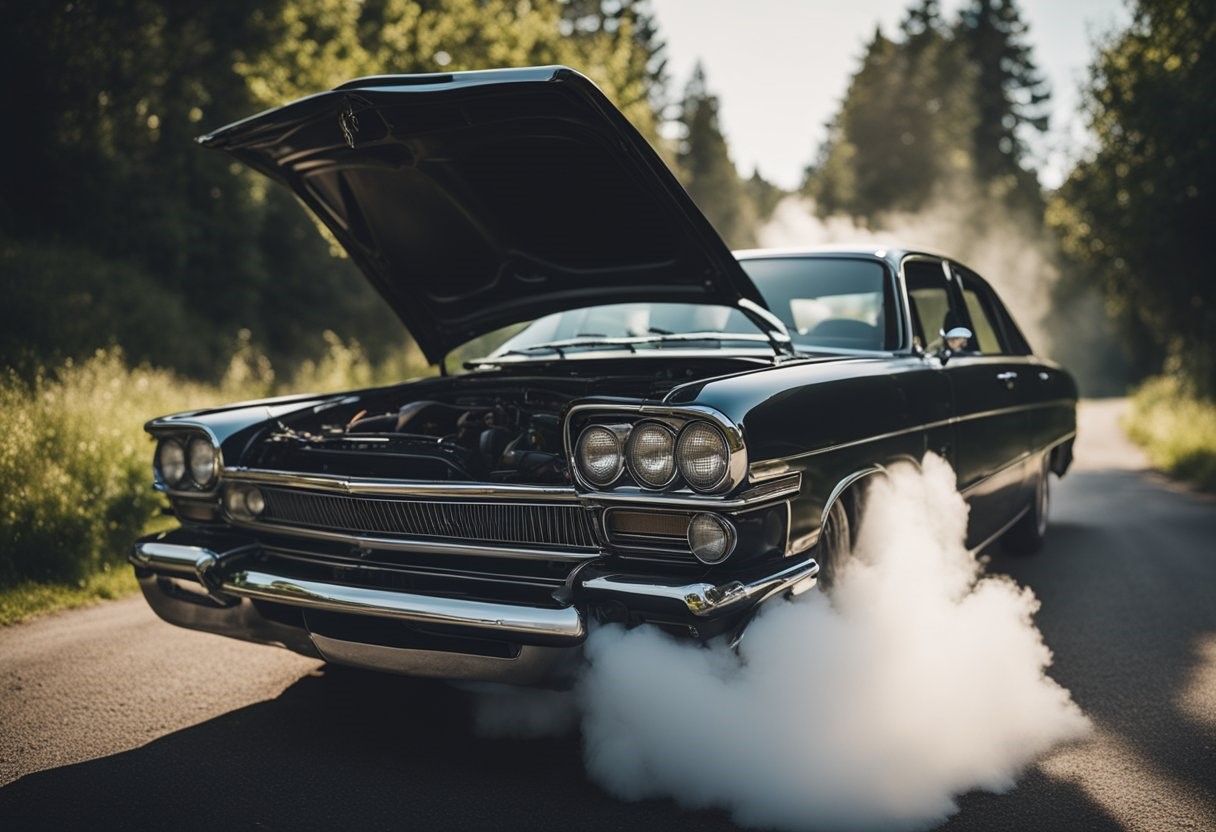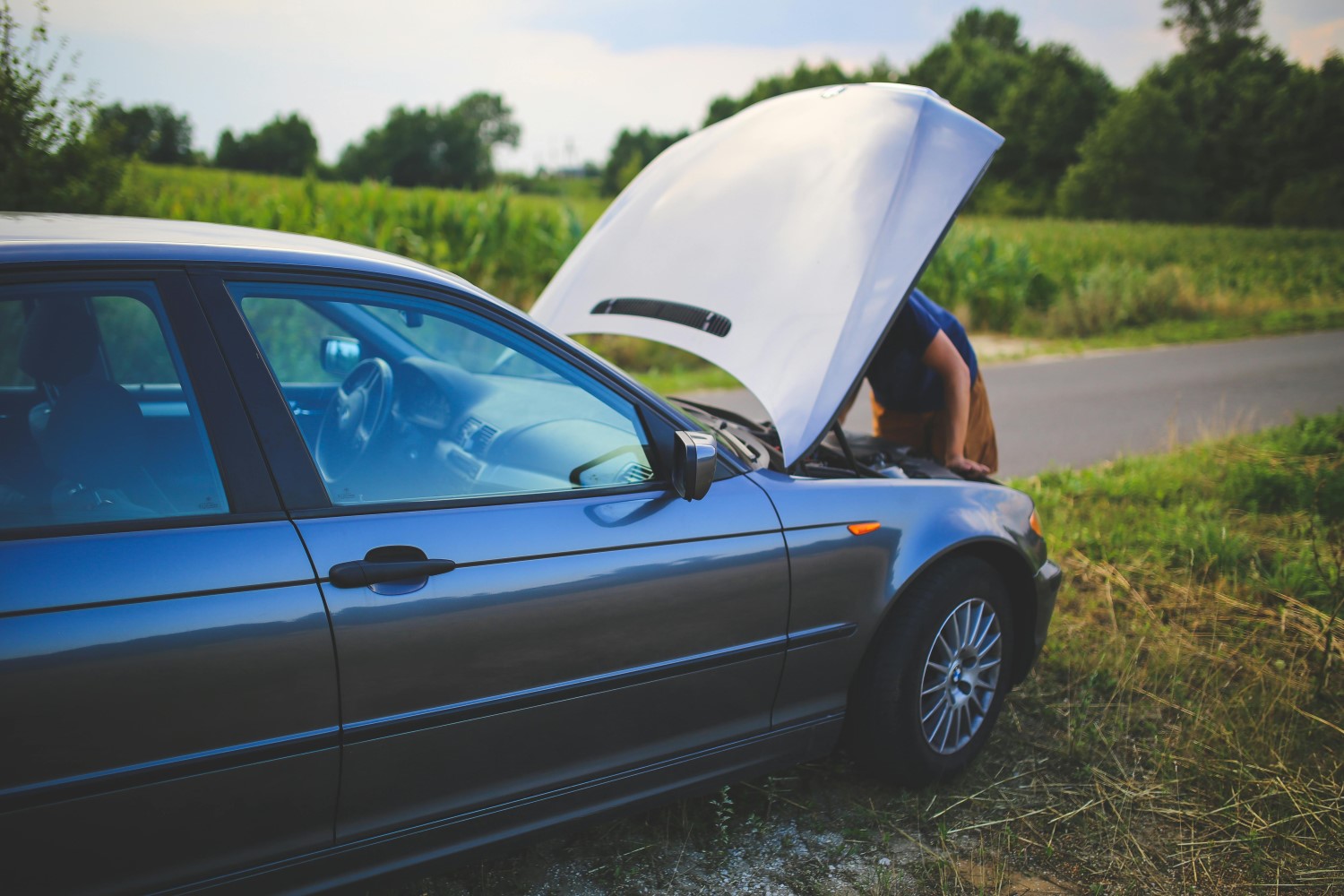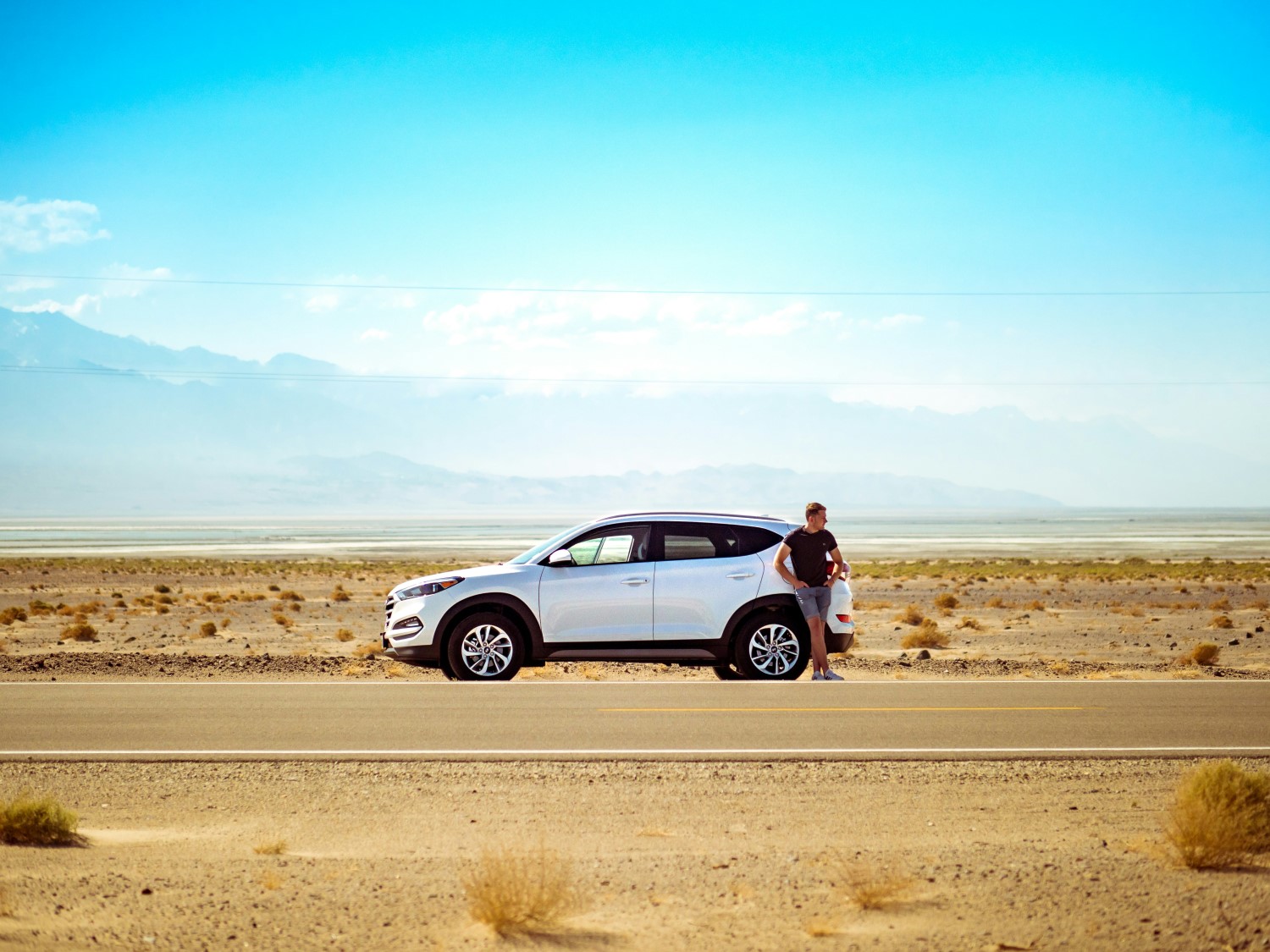What to Do if Your Car Overheats
A car overheating can happen unexpectedly and cause serious damage if not handled quickly. Knowing how to respond immediately helps prevent costly repairs and keeps the driver safe.
If a car starts to overheat, the driver should pull over safely, turn off the engine, and allow the vehicle to cool down before checking under the hood.
Ignoring the warning signs of overheating risks engine failure and leaves the driver stranded. Understanding the basic steps to take in this situation can minimize damage and prepare the driver for what to do next.
Recognizing Signs of an Overheating Car
An overheating car shows clear symptoms that indicate a problem with the engine’s cooling system. Drivers should pay close attention to dashboard alerts, strange noises, and visible steam or smoke.
Warning Lights on the Dashboard
The temperature gauge often moves toward the red zone when the engine overheats. This gauge typically displays a thermometer icon or a “TEMP” label. Drivers should stop immediately if the needle enters the danger zone.
Many vehicles also have a dedicated overheating warning light, often resembling a thermometer or waves, which will illuminate in red or orange. Ignoring these lights can lead to severe engine damage.
Unusual Engine Noises
An overheating engine sometimes produces a knocking or pinging sound. This occurs when the fuel-air mixture ignites improperly due to high temperatures.
Drivers may also hear a high-pitched hissing or sizzling noise. This can signal coolant boiling or escaping from the system.
These noises are not normal and usually mean the engine is under stress from excessive heat. Prompt attention can prevent further mechanical failure.
Steam or Smoke Under the Hood
Visible white steam or smoke coming from beneath the hood is a strong indicator of overheating. The steam typically results from coolant leaking and evaporating.
This may also be accompanied by a sweet smell, which comes from leaking antifreeze. Any smoke with a burnt or oily odor should be treated as a serious mechanical issue.
If steam or smoke appears, the driver should pull over immediately and allow the engine to cool down before inspecting further. Attempting to open the hood while the engine is hot can cause injury.
Immediate Actions to Take When Your Car Overheats

When a car overheats, the driver needs to act quickly and carefully to prevent further damage. This involves stopping the vehicle safely, shutting off the engine, and waiting for the engine to cool before attempting any other action.
Safely Pulling Over
The driver should look for a safe, flat area to pull over immediately. Using turn signals and checking mirrors ensures the maneuver does not create risk for other road users.
If possible, pulling onto the shoulder or a designated emergency lane is best. Avoid stopping in active traffic lanes or curves where visibility is limited.
Once stopped, the vehicle should be turned off promptly to limit heat buildup.
Turning Off the Engine
After pulling over, the driver must turn off the engine right away. This prevents more heat from circulating through the engine components.
Leaving the engine on can cause severe damage to the radiator, gaskets, and other critical parts. Turning it off helps stop the overheating process.
Do not attempt to remove the radiator cap while the engine is hot, as hot steam or coolant can cause burns.
Allowing the Engine to Cool
The engine needs time to cool before any intervention. Typically, this takes at least 30 minutes but varies depending on ambient temperature and engine size.
During this time, the driver should avoid opening the hood abruptly. After waiting, the temperature gauge and steam should be checked carefully before proceeding.
Once cooled, inspecting coolant levels and the radiator for possible leaks can guide further action. If necessary, call for professional roadside assistance.

What Not to Do If Your Car Overheats
Certain actions can worsen the situation or cause injury when a car overheats. It is critical to handle the problem with caution and avoid common mistakes that increase risk or damage.
Avoiding Opening the Radiator Cap
Opening the radiator cap while the engine is hot can cause severe burns. The cooling system is pressurized, and hot coolant or steam may spray out violently.
Wait until the engine has cooled completely, which can take 30 minutes or more. If immediate cooling is necessary, use protective gloves and a thick cloth, but only attempt to open the cap slowly once pressure has eased.
Not Driving Further If Possible
Continuing to drive a car that is overheating can cause engine damage. Heat warp engine components, damage the head gasket, and in extreme cases, cause engine seizure.
If the temperature rises significantly, the best action is to pull over safely and turn off the engine. Driving even a short distance increases risks and can add costly repairs.
Diagnosing the Cause of Overheating
Identifying why a car overheats is crucial to fixing the problem. It often involves checking fluid levels and looking for signs of leaks that affect the cooling system’s performance.
Checking Coolant Levels
The first step is to inspect the coolant reservoir and radiator when the engine is cool. Low coolant levels can cause the engine to overheat because there isn’t enough fluid to absorb and dissipate heat.
If the coolant is below the “minimum” mark, adding the recommended type is necessary. Using plain water or the wrong coolant can cause corrosion or reduce cooling efficiency.
It’s important to check the coolant’s condition; it should look clear or bright green, orange, or pink, depending on the type. Cloudy or rusty coolant may indicate contamination or internal corrosion.
Inspecting for Leaks
Leaking coolant reduces fluid levels and prevents proper cooling. Common places to check include hoses, the radiator, the water pump, and the heater core.
Look for puddles or wet spots under the vehicle after it’s parked. White or green stains around engine components may signal dried coolant residue.
Inspect hoses for cracks, softness, or bulges that indicate wear. The radiator should be free of dents or corrosion, and the water pump might have a weep hole leak.
Leaks inside the engine can be harder to detect but often cause coolant loss with no visible signs outside.
Steps to Cool Down Your Engine Safely
Cooling down a car engine after it overheats requires careful actions to prevent damage or injury. It involves managing the engine coolant safely and knowing when and how to restart the engine properly.
Using Coolant or Water Appropriately
The driver should first turn off the engine immediately to stop heat buildup. Opening the hood can help air circulate, but caution is essential to avoid hot steam or burns.
Coolant should only be added once the engine has cooled slightly, typically after 15-30 minutes. Opening the radiator cap too soon can cause pressurized hot coolant to spray out.
If coolant is unavailable, distilled water is an acceptable temporary substitute but must be replaced by proper coolant soon after. Adding fluid to the radiator reservoir (not the radiator directly if the cap is sealed) helps prevent stalling due to low coolant levels.
Restarting the Engine After Cooling
After the engine has cooled down and fluid levels are checked or topped up, the driver can restart the engine carefully. They should watch the temperature gauge closely during startup.
If the temperature rises again quickly or steam appears, they should turn the engine off immediately and seek roadside assistance. Operating the vehicle for long after overheating risks severe engine damage.
Restarting gently and monitoring ensures that cooling systems are functioning and prevents hastening engine wear or failure.
Deciding Whether to Call for Roadside Assistance

When a car overheats, quick and careful decisions help prevent damage or injury. Knowing when to call a tow truck and when it’s safe to drive to a secure spot is essential for managing the situation effectively.
When to Contact a Tow Truck
A tow truck should be called immediately if the engine temperature gauge shows red or steam is coming from under the hood. Continuing to drive in these conditions risks severe engine damage. If the car stops running or makes unusual noises, this also indicates a need for professional help.
Drivers should avoid opening the radiator cap while the engine is hot, as this can cause burns. Waiting for specialized assistance protects both the vehicle and the person.
Driving to a Safe Location
If steam appears but the temperature gauge has not reached the danger zone, moving the car to the shoulder or a nearby parking area is advised. The vehicle should be driven slowly with the heater on high to help cool the engine.
Avoid turning off the engine immediately if possible, which helps prevent heat buildup. However, if the car starts to lose power or temperature rises quickly, stopping and calling for help is necessary.
Long-Term Solutions for Preventing Car Overheating
Preventing car overheating requires consistent attention to the vehicle’s cooling system and prompt replacement of malfunctioning parts.
Regular Maintenance Checks
Routine coolant level checks are crucial for preventing overheating. The coolant should be at the proper level and of the correct type specified in the owner’s manual.
Engine oil also plays a role in temperature regulation. Changing oil on schedule ensures it retains the ability to lubricate and cool engine parts effectively.
Inspecting the radiator for leaks, corrosion, and blockages can prevent heat buildup. Flushing the cooling system every 30,000 miles removes sediment that restricts coolant flow.
Belts and hoses must be checked for cracks or wear. Faulty belts can cause water pump failure, stopping coolant circulation and leading to overheating.
Replacing Faulty Components
Replacing the thermostat is necessary when it sticks closed, preventing coolant flow. A malfunctioning thermostat raises engine temperature quickly.
The water pump should be replaced if it leaks or its impeller wears down. Without proper water circulation, the engine can overheat rapidly.
Radiator fans must operate correctly. If the electric fan or fan clutch fails, airflow through the radiator decreases, reducing cooling efficiency.
Using quality replacement parts, matched to the vehicle’s specifications, ensures longevity and proper temperature control. Regular replacement schedules help maintain these critical components in working order.
Potential Risks and Damage from Overheating
Overheating can cause serious mechanical problems and compromise passenger safety. It affects critical engine components and can lead to hazardous conditions inside the vehicle.
Engine Failure
Excessive heat causes engine parts to expand, warp, or crack. This can damage the cylinder head, block, and gaskets, leading to leaks and reduced compression. A blown head gasket is a common result, allowing coolant and oil to mix, which severely harms engine performance.
Components like pistons and valves can seize or malfunction when temperatures rise beyond normal operating ranges. Prolonged overheating may result in a complete engine breakdown, requiring costly repairs or a full replacement.
Ignoring early signs of overheating can accelerate wear and tear on the cooling system, increasing the chance of sudden engine failure.
Safety Risks to Passengers
An overheating engine raises the risk of unexpected breakdowns, potentially leaving occupants stranded in unsafe areas. Steam or smoke from the hood can obstruct visibility, distracting the driver and other motorists.
High heat levels may cause the vehicle to stall, especially on busy roads or highways, increasing accident risks. Additionally, overheating can trigger fires if leaking fluids contact hot engine parts.
Passengers inside a stalled vehicle can face discomfort or heat-related health issues if the air conditioning fails alongside engine problems. It is critical to address overheating promptly to minimize these dangers.
Legal and Insurance Considerations After an Overheating Incident
An overheating incident can affect insurance claims and may sometimes lead to legal issues, especially if it causes property damage or injury. Understanding when to seek legal advice and the role of specialized attorneys can be crucial for protecting your rights.
Impact on Insurance Claims
Insurance companies typically cover damages caused by overheating if comprehensive or collision coverage is active. Policyholders should document the incident thoroughly, including photos and repair estimates, to support their claim.
If the overheating led to a fire or caused an accident, it might affect liability assessments or premiums. Failure to maintain the vehicle properly could result in claim denial, so it’s important to keep service records up to date.
Promptly reporting the incident to the insurer is essential. Delays can complicate the claim process or reduce payout chances. Drivers should review their policy terms to understand what damages are covered.
When to Consult a Car Accident Attorney
If an overheating incident results in significant property damage or injury, consulting a car accident attorney can help protect legal rights. This is particularly relevant if there is a dispute over fault or insurance coverage.
An attorney can assist in negotiating with insurers and handling paperwork, ensuring the client receives fair compensation. They are also useful in cases where third-party negligence contributed to the incident.
Legal advice is often necessary if an overheating problem leads to a collision or fire causing third-party injuries. Early consultation can prevent costly legal complications and clarify responsibilities under the law.
Role of a Stockton Car Accident Lawyer
A Stockton car accident lawyer specializes in local vehicle incident cases and understands California’s traffic laws and insurance regulations. They offer guidance tailored to the region’s legal environment.
Such a lawyer can investigate whether maintenance issues or vehicle defects were a factor in overheating. They also represent clients in negotiations or court proceedings to pursue compensation.
Clients benefit from the lawyer’s experience in handling claims involving mechanical failures and accidents. This expertise strengthens the client’s position when dealing with insurance companies or opposing parties.
Tips for Driving in High-Temperature Conditions
Driving in hot weather requires careful attention to how the vehicle performs and how the driver reacts on the road. Paying close attention to speed, vehicle load, and heat-related warning signs can help prevent overheating and maintain safety.
Adjusting Driving Habits in Hot Weather
Drivers should reduce speed to lessen engine strain, which lowers the chances of overheating. Avoiding rapid acceleration and heavy braking is important, as these increase engine and transmission heat.
Using air conditioning moderately is advised, because running it continuously might add stress to the engine. If traffic is heavy, stopping in shaded areas and turning off the engine during long waits can help cool the vehicle.
Drivers must avoid carrying excessive loads, as extra weight forces the engine to work harder. Planning trips during cooler parts of the day, like early morning or late evening, also reduces the risk of overheating.
Monitoring Dashboard Indicators
Regularly checking the temperature gauge is critical. If the needle moves into the red zone or a warning light appears, the driver should stop safely to prevent engine damage.
Other signs on the dashboard include low oil pressure and battery warning lights, which can indicate issues aggravated by heat. Immediate response to these alerts can prevent breakdowns.
Drivers should also pay attention to unusual smells, such as burning oil or coolant, and listen for overheating-related noises. These signals require prompt action, such as turning off the engine and seeking professional help.
